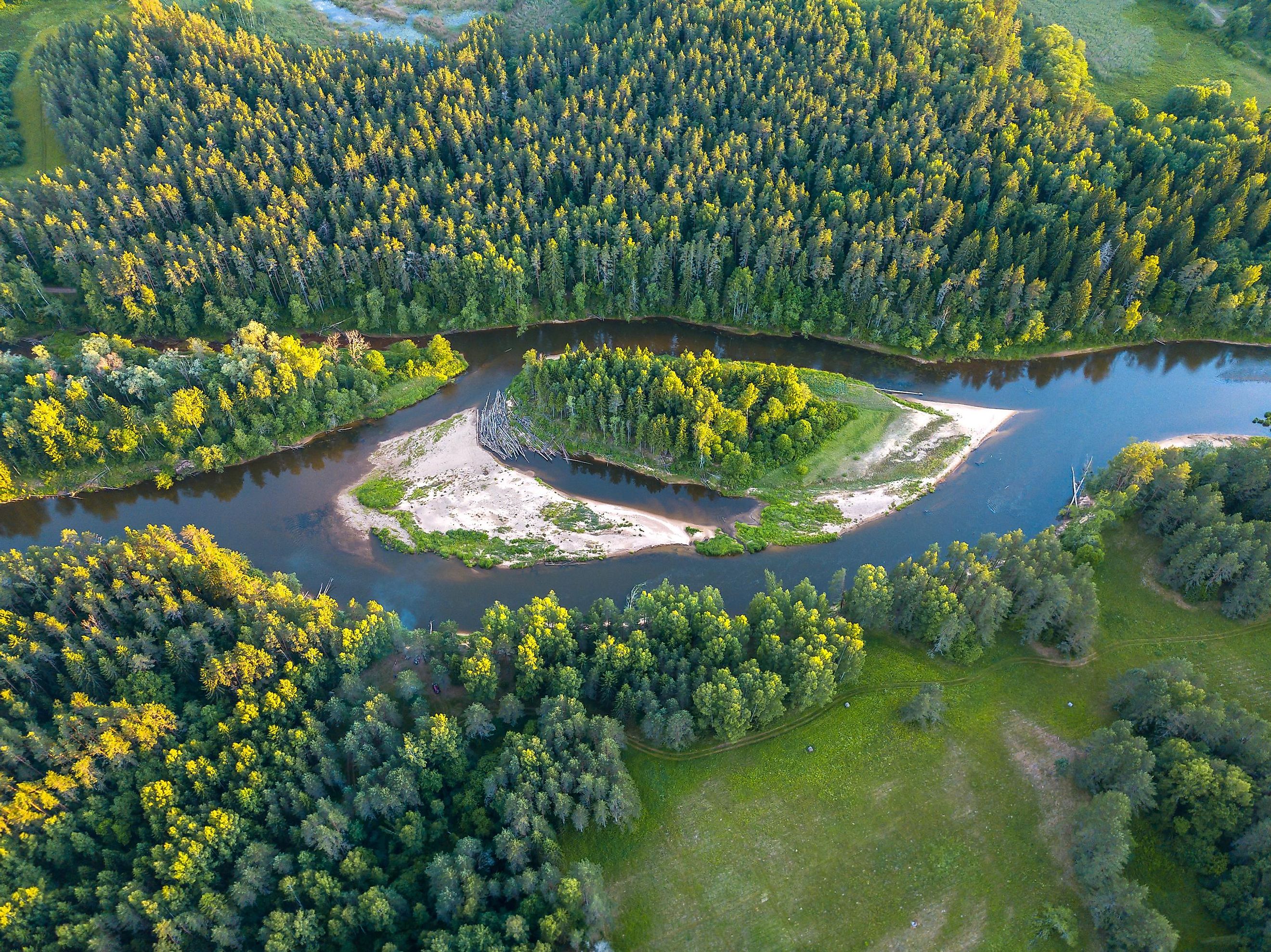
Gauja River
Often, rivers are seen as idyllic slices of nature that exemplify the merits of spending quality time outdoors. However, to ancient civilizations and industrialists, rivers are priceless assets for both sustenance and profit. The Gauja River in Latvia is part of that economic tradition because of its utility for human settlements and the adjacent ecosystems that also rely on it. Furthermore, considering the medieval chaos of Northern Europe, the area's history is rife with tales of both the heroic and the tragic. The climate is fairly chill, showing that life can thrive anywhere. All in all, each factor surrounding the Gauja River has enriched the surrounding country and culture.
Geography
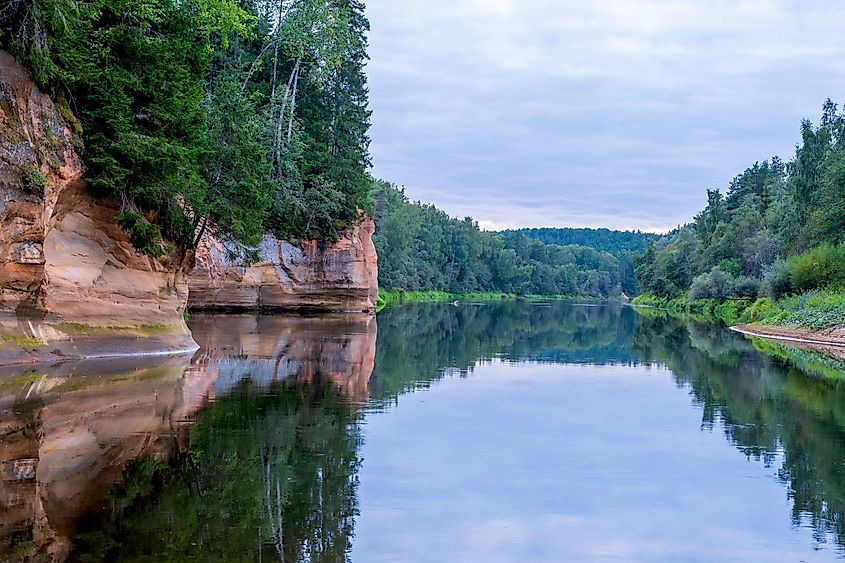
The Gauja River, Latvia's sole major river that originates and concludes within the country, spans 286 miles, with about one-fifth or 58 miles of it flowing through the Gauja National Park. This park, established in 1973, encompasses an area of 354 square miles.
Composed of loose sand and gravel deposits, the riverbed shifts with the current. In certain areas, pebble beds create boulder rapids such as Kazu, Raiskuma, Rakšu, and Ķūķu. Within Gauja National Park, the river's width ranges between 200 and 390 feet, with its depth fluctuating from 1 foot to 23 feet. The river's gradient measures 2.6 ft/mile, and its flow rate varies from 0.2 to 0.4 yards/sec during low water periods and 2 to 3 yards/sec in the spring. Carving its path through the Gauja valley, which ranges from 0.6 to 1.5 miles in width, the river reaches its greatest depth of 278 feet near Sigulda.
The sandstone rocks on the banks of the Gauja began forming 370 to 300 million years ago during the Devonian period. The ancient Gauja River valley has been around for more than 350 million years, but the melting of glaciers created its present-day terrain with ravines at the end of the Ice Age. More specifically, the valley began taking shape around a million years ago during the Quaternary glaciation period, with its final form developing during the last glacial episode 10,000 to 20,000 years ago. As glaciers repeatedly covered Latvia and melted, the meltwater filled the valley's terraces and transported fieldstones, gravel, and clay.
History
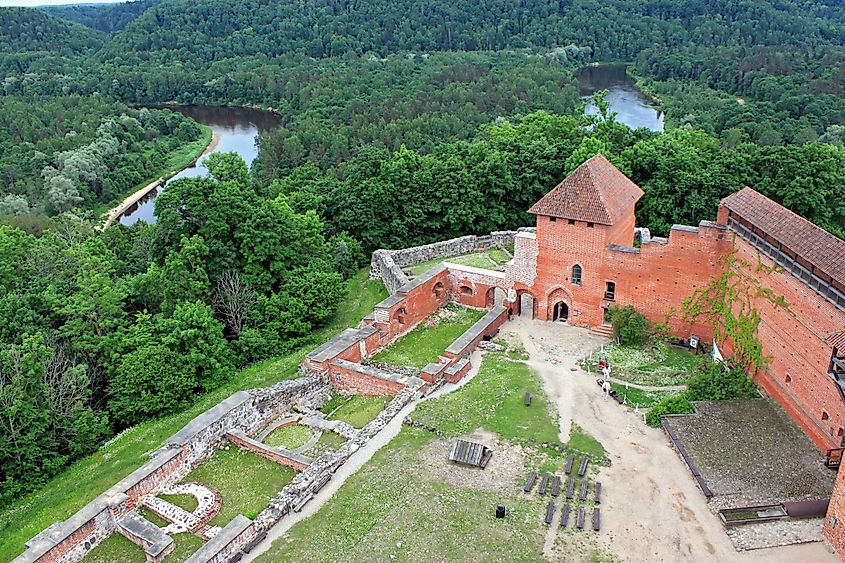
In pre-13th century times, the Gauja River functioned as both a trade route and a border river between the Livonian and Latgalian lands, where people of both groups lived together. The river was called Koivo (the Birch River) in Livonian and Estonian languages, although those languages are not currently as present in the area.
The Gauja valley played an important role in the Livonian Crusades due to its extensive network of waterways and land roads (known as the Via Magna of Livonia in Latin). The valley was also home to various ethnic groups, each controlling their own lands, including Livonians, Ydumea people, Letts, and Vends.
In the 13th century, several new stone castles were built in the Gauja valley, including those of the Livonian Order (Sigulda Medieval Castle, Cēsis Medieval Castle, Valmiera Castle) and the Archbishop of Riga (Turaida Castle). The reason behind these costly constructions lies in the valley's natural and artificial infrastructure (waterways and roads), which were crucial resources for a medieval country to defend.
Fauna And Flora
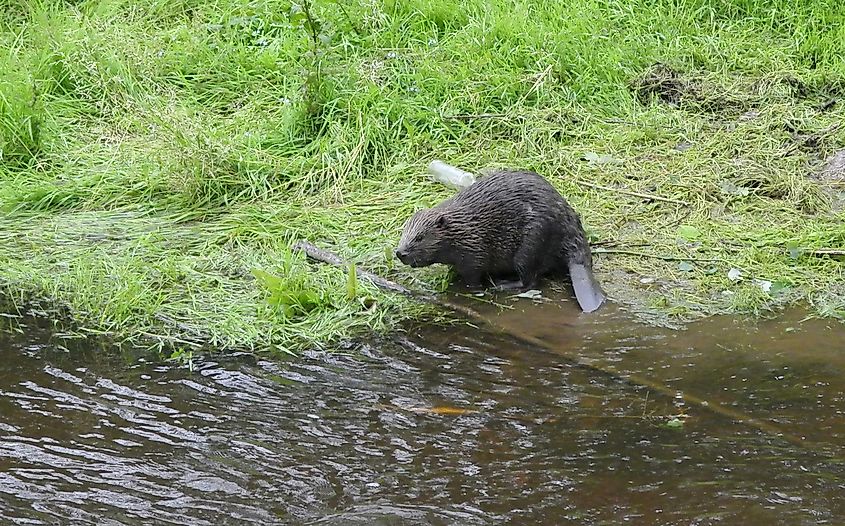
The Gauja River supports a variety of wildlife, both aquatic and terrestrial. The river is inhabited by fish such as salmon, trout, pike, perch, chub, and eel. It also provides a habitat for otters, beavers, minks, and waterfowl. The riverbanks are lined with forests of pine, spruce, birch, alder, and oak trees. The forests host many animals, such as deer, elk, wild boar, lynx, foxes, wolves, and bears. The Gauja National Park also protects rare and endangered species such as the black stork, the lesser spotted eagle, the European pond turtle, and over 800 species of vascular plants.
Climate
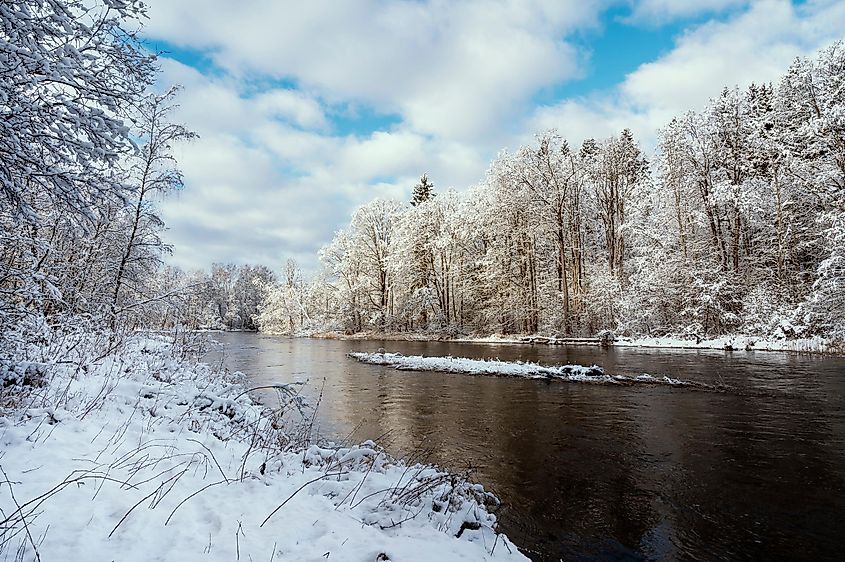
The river's climate is shaped by its position within the temperate zone and its closeness to the Baltic Sea, resulting in four distinct seasons marked by chilly winters and temperate summers.
Temperature fluctuations around the Gauja River range from an average of 23.4°F in January to 70.7°F in July. January is typically the coldest month, with the river often freezing over as the average low-temperature dips to 23.4°F. Conversely, July is the warmest month, featuring an average high temperature of 70.7°F.
Precipitation near the Gauja River remains fairly consistent throughout the year, with an average yearly rainfall of 27.6 in. August tends to be the rainiest month, with an average rainfall of 3.3 in, while February is usually the driest, receiving an average rainfall of 1.5 in. During the winter months, the river's surrounding area experiences some snowfall, with an average snow depth of 7.1 in in January.
Economy And Tourism
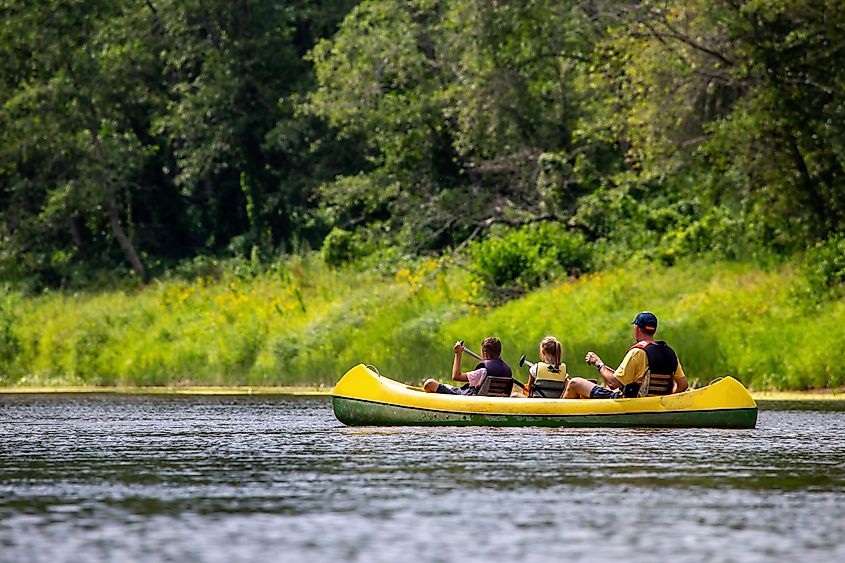
In terms of economic assets, the Gauja is indispensable for the water it provides for irrigation, its hydroelectric power generation, and commercial/recreational fishing. The forests along the river offer timber, mushrooms, berries, and hunting opportunities. The river also attracts many visitors who enjoy its natural beauty and recreational activities. Furthermore, the Gauja National Park offers hiking trails, cycling routes, canoeing trips, camping sites, and historical landmarks such as castles, churches, and museums. The river is also a popular destination for winter sports such as skiing, snowboarding, ice skating, and sledding.
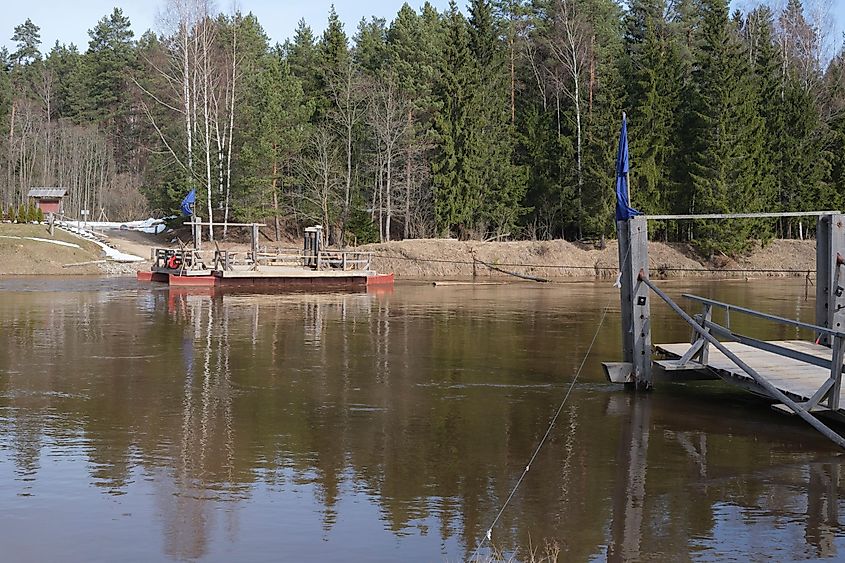
There are a handful of towns that represent the citizens of the Gauja River best. First, Sigulda is famous for its historical and natural attractions, including a cable car traversing the river valley and an internationally recognized bobsleigh and luge track. Further along the Gauja River lies Cēsis, one of Latvia's oldest towns and a cultural and historical epicenter of the region. This charming town boasts a museum dedicated to the history and art of Cēsis. Valmiera, the largest city on the Gauja River, serves as an economic and educational cornerstone of northern Latvia, featuring a theater and a brewery responsible for producing one of Latvia's most beloved beers. Lastly, Turaida, a quaint village and museum reserve, displays the area's heritage and folklore through a wooden church and the adjacent hill that memorialize the legend of Turaida Rose, a maiden who made the ultimate sacrifice for love.
The Gauja River represents a vital artery that has shaped and nurtured the Baltic region for centuries. Its diverse geography, historical narrative, and flora and fauna highlight the river's significance as a cornerstone of regional ecosystems, cultural identity, and economic prosperity. The Gauja River's legacy as a natural border, strategic stronghold, and cradle for thriving habitats underscore its continued relevance to the societies, wildlife, and landscapes that still depend on its life-giving waters. Therefore, in order to preserve the region for future generations, a continued emphasis on conservation efforts is the most prudent course of action.










